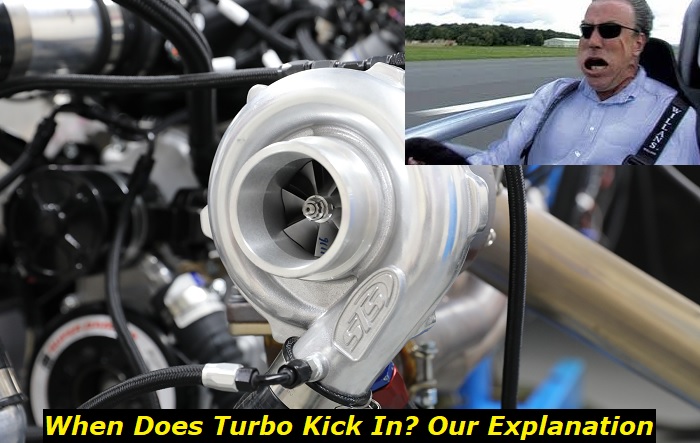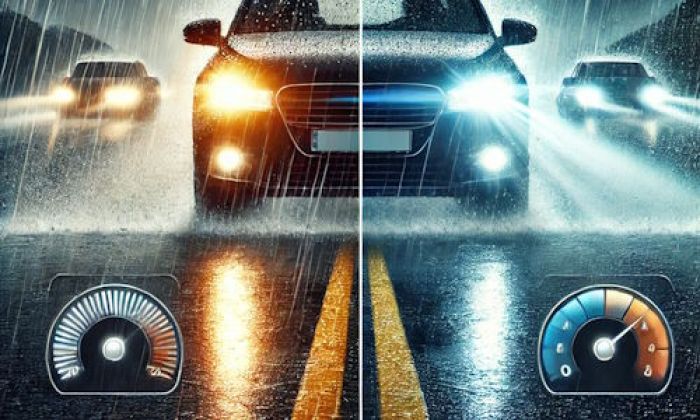Ever wonder when does your turbo kick in? You might have noticed that the sweet whistling sound of your turbo tends to kick in when your vehicle has already reached higher speeds and gears. However, there may be times when it also engages when you are revving at low speeds.
Engine systems use highlights
- Level of importance:important
- When done:when driving or maintaining the vehicle
- Cost of mistake:$100 - $300
- How to avoid:read driver's manual, ask your dealership for guidelines
- Consequences:wrong use ofimportantfunctions, minor engine damage
- DIY solutions:possible

What Does a Turbocharger Do?
First off, let's run you over the basics of a turbocharger just so you can have an idea or a recap of what it does to your vehicle. This will give you a hang of what we will be discussing later on. A turbocharger is a compressor that forces additional air into the engine of a vehicle.
This process forces more fuel and air mixture into the combustion chamber which in return increases power output. The more air you add, the more power it can generate due to increased oxygen molecules coming into contact with fuel leading to higher combustion rates.
The turbocharger has three main components, namely the turbine housing, compressor housing, and bearing system. The turbine housing houses the turbine wheel that spins at speeds of 80,000 to 280,000 rotations per minute depending on the kind of turbocharger that you have. It is also powered by exhaust gases from your engine.
This spinning motion then turns an axle which passes on its energy through a central shaft, connecting both housings. On one side lies the turbine housing while on the other end is the compressor housing. The compressor housing has one purpose, to compress air and push it into the intake manifold of your engine.
The bearing system is what allows the turbine wheel to spin at such high speeds without any major friction losses or potential seizure. It helps reduce vibrations and keep a steady flow across both housings that make up the turbocharger. All these components come together to form an efficient, powerful machine allowing for higher performance levels in engines and vehicles.
Turbochargers have since been popular in cars due to their ability to add more power without making drastic changes or spending too much on aftermarket modifications. A turbocharger can make your vehicle faster, giving you more power with the same engine size.
This is good for performance and efficiency as it allows for a smaller engine to do the work of a larger one, leading to less fuel consumption and better mileage. Another benefit of having a turbocharger on your car is increased throttle response which translates into quicker acceleration times from standstills or in-gear shifts while driving around town or across states.
Kinds of Turbocharger
It is important for you to know the different kinds of turbochargers as well for the purpose of this topic. At present, there are six main turbocharger setups used by auto manufacturers. These are single-turbo, twin-turbo, twin-scroll turbo, variable geometry turbo, variable twin-scroll turbo, and electric turbo.
All these kinds of turbochargers bring their own set of benefits to the table, allowing for more power and better fuel efficiency depending on your needs. Here is a quick look at their features:
1. Single-Turbo
A single turbocharger setup is the most common for smaller engines as it provides powerful and responsive thrust with a relatively modest amount of power.
2. Twin-Turbo
This setup uses two turbochargers instead of one, allowing for a broader range of performance and higher levels of power output.
3. Twin-Scroll Turbo
This type allows the exhaust gases to be split into two streams, each passing through its own turbine wheel before reaching the compressor housing on the other end.
4. Variable Geometry Turbo
The variable geometry turbo utilizes vanes that can change their pitch angle to either increase or decrease airflow being delivered into the engine depending on the current driving conditions.
5. Variable Twin-Scroll Turbo
This setup combines both the twin-scroll and variable geometry turbo technologies to provide a more responsive and efficient performance.
6. Electric Turbo
This is relatively in its early stages but it has great potential as it can deliver instant response without any delays from the turbine wheel spinning up.
When Does the Turbocharger Kick In
The time when the turbocharger kicks in can vary from one manufacturer or car model to another. We can't really list them all here one by one since there is an estimated 400 different models of car in the world nowadays, and that does not even include their different trims and body types. Therefore, this section only provides the basics of when this part actually engages.
As mentioned earlier, there are different types of turbochargers used in cars. Each kind is built differently than the other, so they kick in at different events and are calibrated to respond at certain engine conditions.
Just to give you an idea though, here is a rundown of the general ranges of RPMs where each type usually starts to spool up and supply an extra boost:
- A single-turbo typically kicks in at around 2,000 RPMs
- A twin-turbo tends to kick in at around 1,500 RPMs
- A twin-scroll turbo commonly kicks in between 1,300 and 1,600 RPMs
- A variable geometry turbo normally kicks in between 1,200 and 1,700 RPMs
- A variable twin-scroll turbo usually kicks in between 1,000 and 1,500 RPMs
- An electric turbo typically kicks in as soon as you press the accelerator pedal
As shown here, the key factor affecting the operation of your turbo is your engine RPM. However, there are also other elements that you should bear in mind when talking about the activation of your turbo, and these are your engine's temperature and the airflow that is being delivered to it.
Basically, your engine needs to be warm enough for the turbocharger to work properly and for it to be able to provide enough airflow for the turbine wheel to spin up. This is why you may have noticed that your car's turbo usually kicks in when you are already driving, but not right away when you switch on the ignition.
It should be noted that their operations vary depending on their sizes, too. For example, the exhaust gases produced by a small turbo lead to its early and quick spooling. Therefore, it kicks quicker than a bigger one but the same could not be said about the boost it produces when it is running at higher revs.
On the other hand, larger turbos take longer for the exhaust gases to spool it. Thus, turbo lag is more evident in this kind of turbo but it tends to offer a better boost at higher revs.
There is, however, a meeting point that attempts to fill the performance gap between the small and large turbos. These come in sequential turbochargers.
Sequential turbocharging describes a configuration in which the engine uses one turbocharger at lower engine speeds and either a second turbocharger or both turbochargers at higher engine speeds.
This system is designed to get around the drawback of big turbochargers giving out insufficient boost at low RPM. The result is an engine that has the benefits of small and large turbos but with an enhanced boost at a wider RPM spectrum.
So, all these things must be taken into account for your turbocharger to perform as expected.
How to Maintain the Ideal Quality of Your Turbo
Regardless of the type of turbo equipped in your vehicle, there are things that you should keep in mind to ensure its smooth operation.
As a bonus, here are quick tips on how you can maintain the quality of your turbo:
- Perform regular engine maintenance.
- Be mindful of the fuel you're using. Stick with the type recommended by your car manufacturer.
- Make sure that your vehicle is running correctly before attempting a high-speed run or a long drive.
- Monitor and ensure the proper operating temperature of your engine.
- Avoid sudden acceleration or deceleration as this increases the risk of turbo failures.
Following these simple tips will help you keep your car's engine working at its best and your turbocharger in good condition for a long time. If any problems arise, it's important to take the necessary steps to make sure that the issue is resolved promptly and professionally. Doing this helps avoid further damage and costly repairs in the future.
Keeping your turbo in good condition ensures not only better performance but also a longer-lasting engine life.
Conclusion
Turbochargers are great for performance and efficiency, allowing for more power with the same engine size and better fuel consumption. There are many different kinds of turbochargers used by car manufacturers nowadays, all offering unique benefits depending on their operations.
Each type of turbo is governed by its own set of rules that dictate when it should kick in. These mainly boil down to their design and the calibration set by auto manufacturers.
Generally speaking though, most turbos begin to engage in the range of 1,000 to 2,000 RPMs, except in the case of an electric turbo. Temperature and airflow are also important factors that can affect the operation of the turbocharger. Keep all these in mind when considering how your car's turbo works.
About the authors
The CarAraC research team is composed of seasoned auto mechanics and automotive industry professionals, including individuals with advanced degrees and certifications in their field. Our team members boast prestigious credentials, reflecting their extensive knowledge and skills. These qualifications include: IMI: Institute of the Motor Industry, ASE-Certified Master Automobile Technicians; Coventry University, Graduate of MA in Automotive Journalism; Politecnico di Torino, Italy, MS Automotive Engineering; Ss. Cyril and Methodius University in Skopje, Mechanical University in Skopje; TOC Automotive College; DHA Suffa University, Department of Mechanical Engineering






Add comment